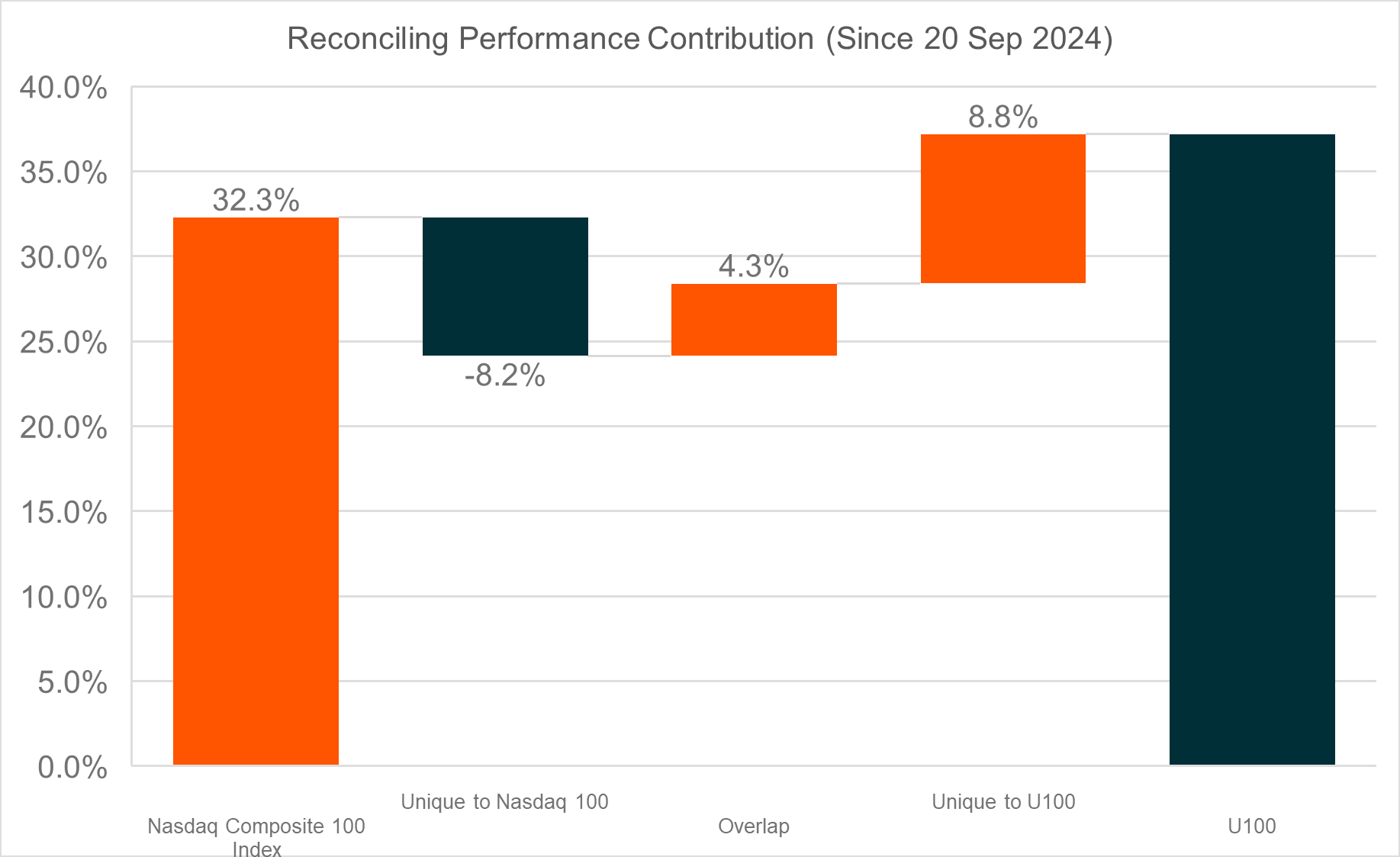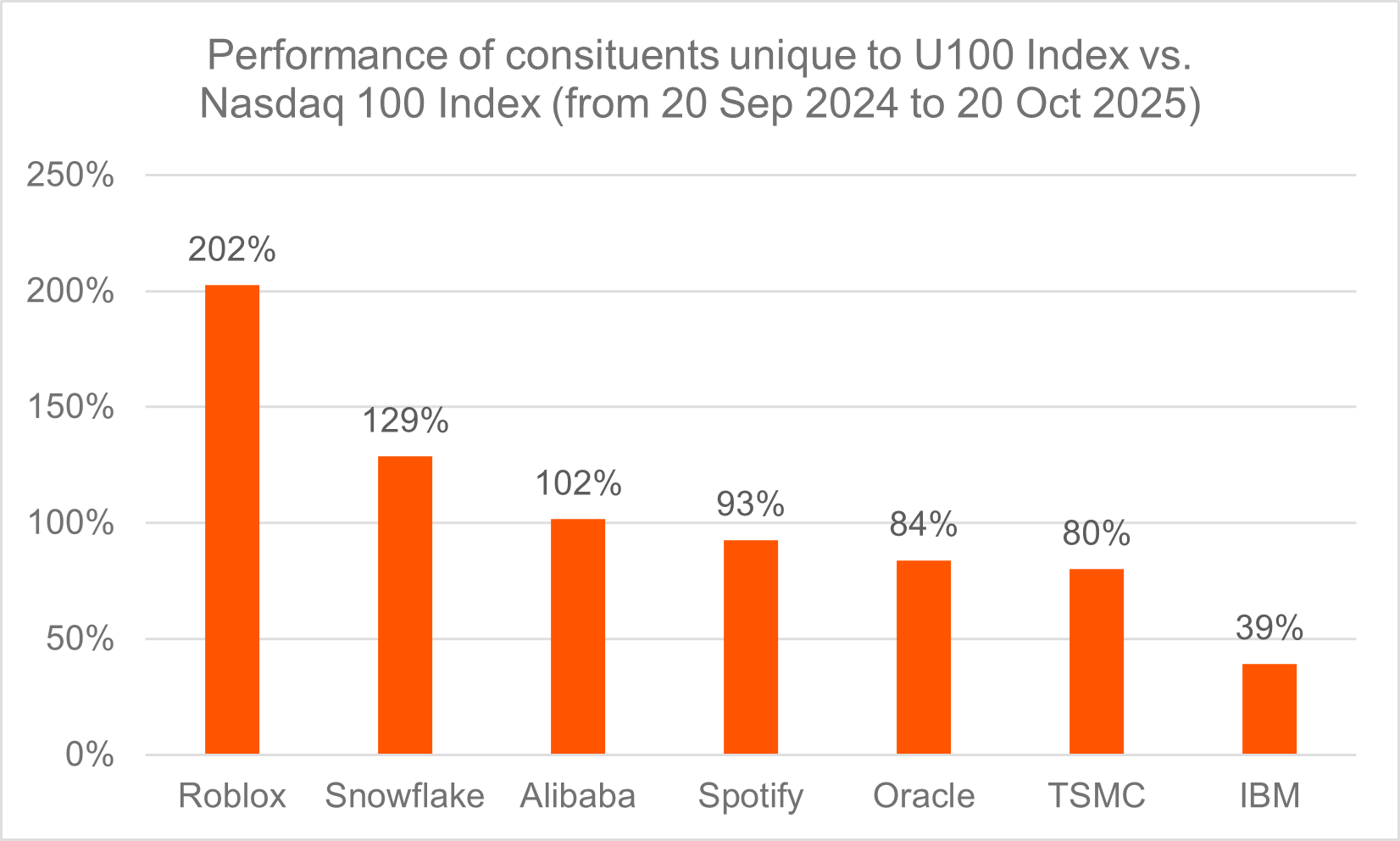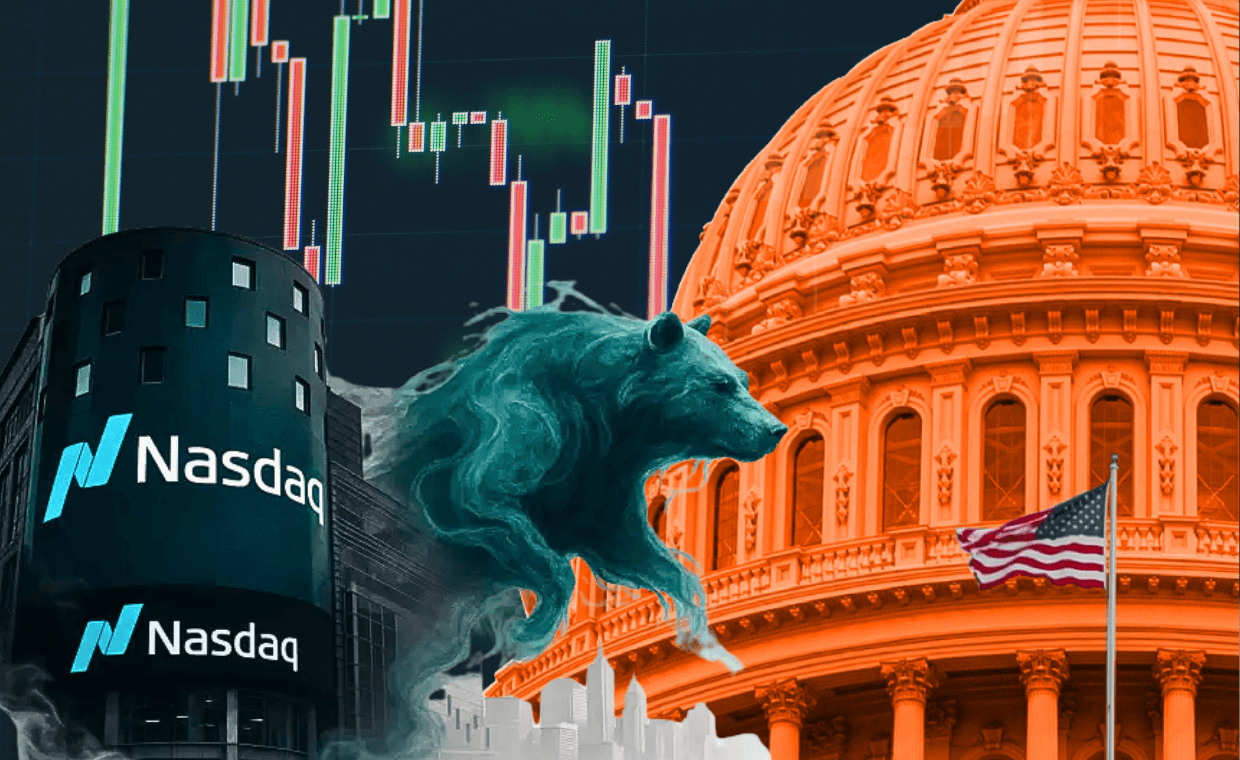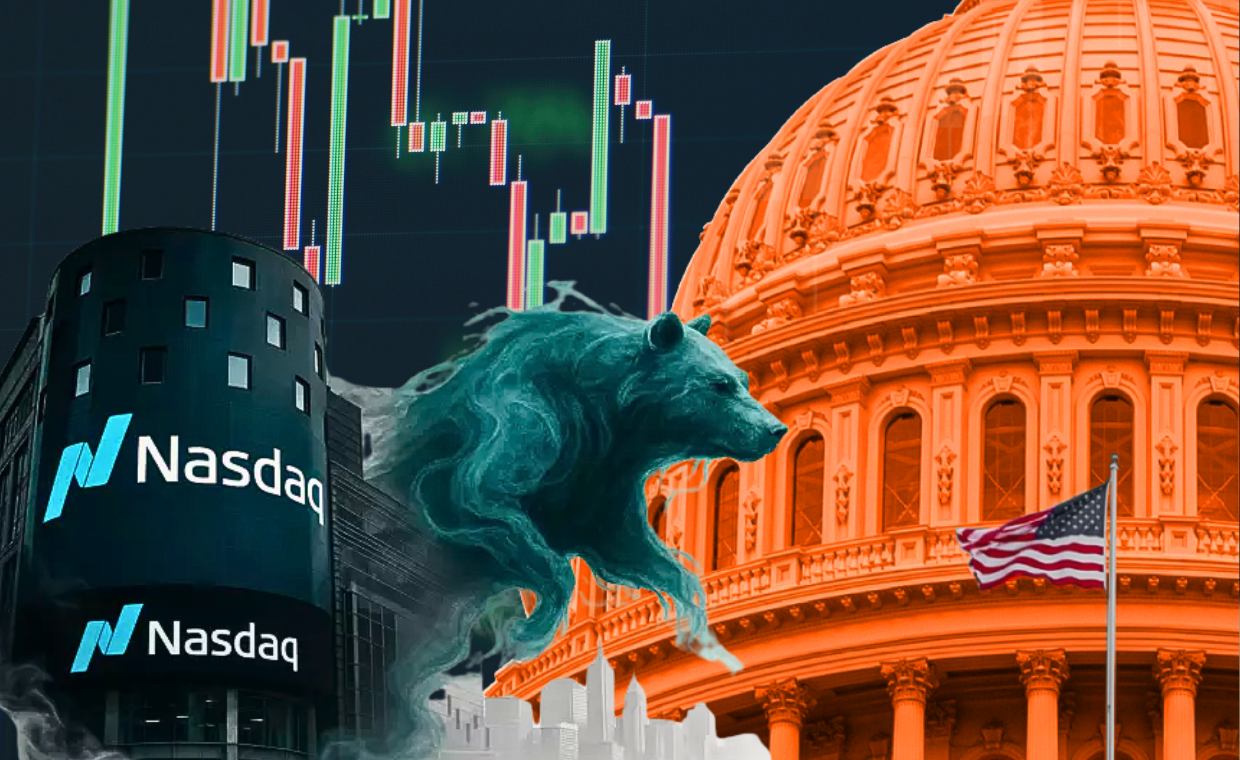Innovation never stands still, and neither should the benchmarks designed to measure it. One year ago, the Global X U.S. 100 Index (U100 Index) methodology was upgraded to capture a broader and more accurate picture of American innovation1. Tracked in Australia by the Global X US 100 ETF (ASX: U100), the index now spans both NASDAQ and NYSE-listed companies, introduces an innovation filter based on measurable research & development (R&D) activity and intangible asset productivity, and applies a refined weighting structure to reward genuine innovation rather than inherited scale. Twelve months on, the results have made a strong case for that evolution.
Key Takeaways
- U100’s Index has outperformed key US large-cap innovation benchmarks such as the Nasdaq 100 Index by around 5% since the September 2024 methodology upgrade2.
- Unique inclusions such as Oracle, Taiwan Semiconductor, IBM and Snowflake led the gains, supported by renewed capital investment and AI-related demand.
- The innovation filter and balanced weighting design delivered broader participation and a cleaner expression of true innovation leadership.
Re-engineering a Benchmark for Real Innovation
The 2024 methodology change was driven by a simple observation: technology leadership had outgrown traditional definitions. Innovation was no longer confined to software platforms but extended to semiconductors, data infrastructure, automation and intelligent systems. By expanding the universe to include both NASDAQ and NYSE-listed companies, U100 captured that evolution and re-established what an innovation index should represent.
The innovation filter sits at the core of this design. To qualify, companies must demonstrate measurable reinvestment through either a positive R&D-to-sales ratio or productivity from intangible assets. This simple rule separates firms that build from those that merely own. It shifts exposure away from legacy names with slower product cycles toward those funding the next phase of industrial and digital transformation.

Source: Bloomberg data as of 27 October 2025
How Selection Became Performance
Since its methodology upgrade, the U100 Index has returned approximately 37% compared to around 32% for the broader large-cap technology index of Nasdaq 1003. The drivers of that outperformance were neither random nor cyclical. They were the result of selection discipline and measurable innovation.

Source: Bloomberg data as of 27 October 2025
Oracle was a standout, benefiting from sustained cloud demand and the rapid adoption of AI-driven data platforms. Taiwan Semiconductor’s continued dominance in advanced chip manufacturing captured a surge in global semiconductor investment, while IBM delivered solid returns through its pivot to hybrid cloud and enterprise automation. Snowflake and Roblox also contributed, reflecting the breadth of innovation now represented within U100 Index’s framework, from data infrastructure to digital engagement.

Source: Bloomberg data as of 27 October 2025
Together, these names illustrate how U100’s Index methodology succeeded in identifying companies reinvesting in technology and scaling new revenue drivers rather than simply maintaining legacy businesses. The result was an index that not only outperformed but did so for the right reasons by capturing innovation where it is being built, not where it used to be.
From Concept to Proof
One year on, the U100 Index relative performance confirm that innovation leadership can be measured and rewarded through structure rather than speculation. The combination of a broader universe, measurable innovation criteria and disciplined weighting has produced an index that more accurately reflects where value creation is happening in the US economy.
For Global X, the U100 Index reflects a shared philosophy of building beyond ordinary, recognising that thoughtful index design can help investors align with the real engines of progress. The companies driving this change are not only coding software or fabricating chips, but also powering energy systems, digitising industries and building the infrastructure that underpins the AI era.
As the U100 Index marks its first year since the upgrade, the evidence is clear. When innovation is defined by reinvestment and results, the outcome is stronger performance and a truer picture of technological leadership. The index demonstrates that the best way to follow innovation is to keep moving with it.








 Source: Bloomberg data as of 27 October 2025
Source: Bloomberg data as of 27 October 2025
 Source: Bloomberg data as of 27 October 2025
Source: Bloomberg data as of 27 October 2025
 Source: Bloomberg data as of 27 October 2025
Source: Bloomberg data as of 27 October 2025